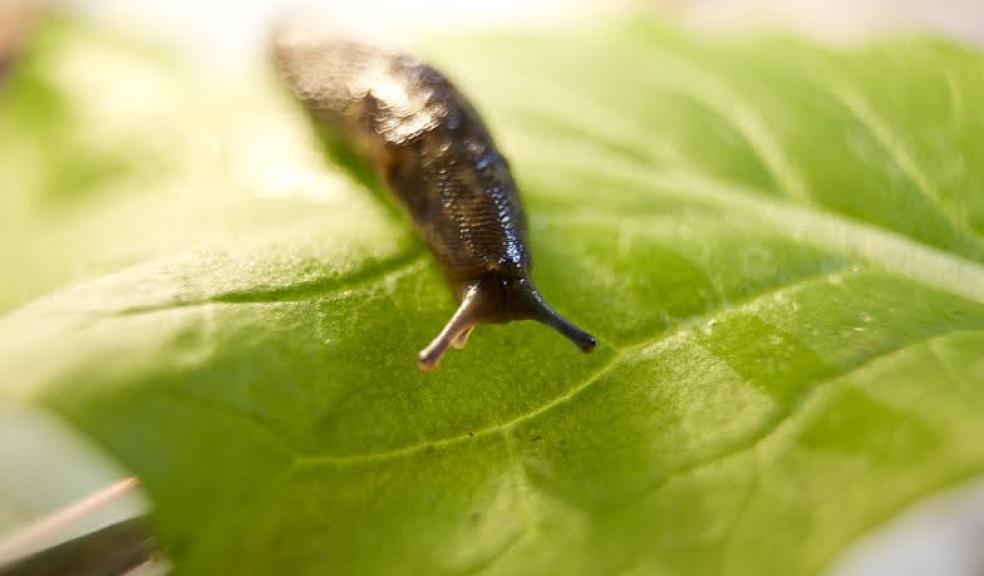
Gardeners beware: The slugs are coming!
Gardeners should start preparing early for their great slug and snail hunt this year as winter temperatures have provided the perfect conditions for their arch enemies.
According to Wyevale Garden Centres – the UK’s largest garden centre group - last year, gardeners spent £11.6 million in their battle to protect their botanical spaces, battling over 30 species of slugs including a voracious invader discovered on our shores only last year – the Spanish slug (Arion vulgaris).
Slugs like mild and warm winters and Met Office statistics show that average temperatures were slightly above what would be expected for both December and January.
The Met Office said: "Early indications show that this winter is on track for slightly higher than average temperatures. Although we saw some colder days at the end of December and the first half of February we haven't seen any prolonged exceptionally cold spells this season."
Slug experts are now warning gardeners that this will cause a population explosion, allowing them to cause devastation in their wake.
Sarah Fuller, Marketing Director and Zoologist at Wyevale Garden Centres said “Slugs and Snails are a real problem for gardeners, making this hobby and pastime a true 24 hour activity. Last year gardeners removed up to 4000 slugs a month.
“It’s likely more slugs have survived this winter so gardeners will be fighting larger numbers and need to use really effective methods. So don't be surprised either if you spot gardeners out at night, headtorches and all, tracking down slugs in their gardens!
“A main concern for gardeners is ensuring that they use pet and child-friendly methods and we’re expecting new products we’re stocking such as SlugGone and Grazers to be hugely popular this year.
“Whilst snails will continue to be a problem, we are not expecting the snail population to worsen this summer.
“Quick tip for gardeners looking to remove snails, don’t think that throwing them over your neighbours’ wall will solve the problem as they will more often than not find their way back!”
There are many slugs British gardeners should be wary of, but none more fearsome then the Spanish 'Superslug'. It grows up to 15cm and with no predators and an extra layer of protective slime making them immune to most products, it outcompetes all its fellow UK slugs (and even eats them). It also reproduces at twice the rate of native UK slugs, making it the number one target for gardeners.
The UK’s leading entomologist, Dr Ian Bedford, said: "It's been estimated that a cubic metre of a garden in the UK could accommodate up to 200 slugs, each of which can have up to 200 offspring. They usually survive the winter in our gardens as eggs.
“Without a cold snap, it's fair to say that slug numbers, especially the invading Spanish slug (which can lay up to 400 eggs!), will escalate this year."
Whilst gardeners can humanely remove native British slugs by releasing them into the wild, experts warn to be careful not to do the same with Spanish Slugs as they could have a potentially damaging effect on the environment they are released into.
Gardeners should also encourage natural predators such as birds and hedgehogs into their garden – helping to keep their slug infestation down as well as helping to protect native British wildlife.
For the organic gardeners out there, there’s the innovative Vitax SlugGone, made from sheeps fleece. Supplied in pellet form, once they are wet they form a mat around targeted plants, the fibres in which contain small amounts of sheep sweat which acts as an irritant to slugs and snails. SlugGone also helps plants grow enabling them to better retain moisture as well as containing naturally occurring slow release nutrients.
So what can gardeners do to win the battle to protect their beautiful oases from impending doom?
Gardeners need not panic and can use Wyevale Garden Centre’s 30 day plan of attack to protect their gardens from these slimy critters:
Beginning March – 30 days to population explosion
- Stock up on supplies
- Unlike snails which hibernate during winter, slugs are active whenever the temperature is above 5°C so any slug you find needs to go.
- Start looking for young slugs.
- Put out your slug pellets
- Surround vulnerable plants with material such as sharp grit or broken egg shells making it too uncomfortable for slugs to attack your plants
Mid March – 15 days to population explosion
- Rotovate your soil to expose slugs and eggs to predators such as hedgehogs and garden birds
- Head out at night with a torch to collect and remove slugs.
- Salt dehydrates slugs, so plants in pots can be protected by greasing the rim with Vaseline mixed with salt.
- Set beer traps by burying jars of beer which slugs find irresistible and as they head for the beer, they fall in to meet their demise, leaving your plants happy. Remember to empty!
April – August - All out war!
- Adult slugs are out in force in May, eating up 40 times their daily weight so continue with night hunts and stock up on pellets in the garden.
- Spanish slugs are out in force – head out and hunt for them, placing those you find in a bucket of soapy water (the soap prevents them from climbing back out!)
September
- Start your battle for next year – slugs are laying their autumn eggs to overwinter. The more you remove now, the less of a problem they will be in 2016.
The slugs are coming so there is no time like the present to get ready for this year’s war in our gardens.
For more information visit www.wyevalegardencentres.co.uk












